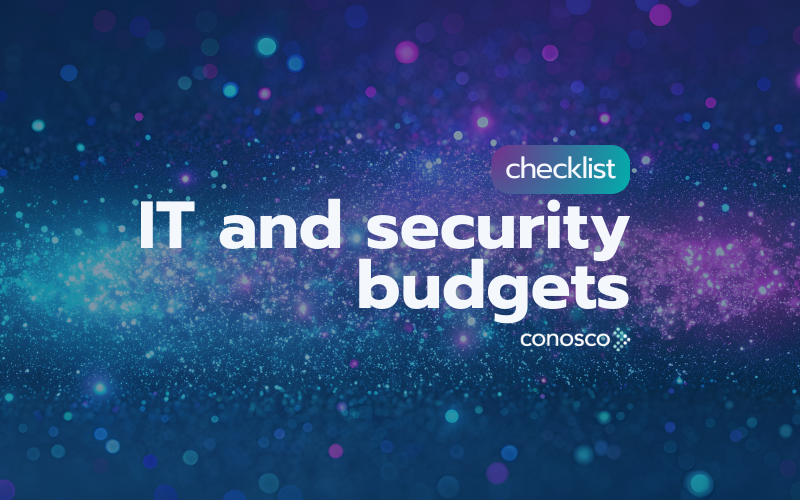Checklist: Cybersecurity for new CIOs and CISOs
by Aaron Flack on 2025

The ultimate security checklist: vital for all new CIOs, CISOs and IT Directors.
For new CIOs, CISOs, and IT Security Directors, having a comprehensive framework for assessing and improving organisational security is essential. The CISO Checklist serves as a vital resource, enabling security professionals to align their strategies with industry best practices, protect against emerging threats, and ensure compliance with regulations. This checklist provides a practical guide to fortify your defences and achieve operational resilience.
What’s Inside?
-
Network Security
Gain insights into securing your network with measures like firewalls, encrypted traffic, VPNs, and network segmentation. Ensure continuous monitoring with SIEM tools. -
Data Protection and Identity Management
Understand how to protect sensitive data through encryption, enforce MFA, and adopt privileged access management to minimise identity-based threats. -
Threat Detection and Vulnerability Management
Learn about proactive steps such as vulnerability assessments, endpoint detection, and real-time incident response to stay ahead of cyber adversaries. -
Business Continuity and Disaster Recovery
Prepare for disruptions with tested business continuity plans, disaster recovery drills, and secure off-site or cloud-based backups
How you benefit
-
Enhanced Risk Mitigation
Minimise vulnerabilities through regular assessments and proactive patching, ensuring your systems are resilient against threats. -
Regulatory Compliance
Align your security practices with GDPR, ISO27001, PCI DSS, and other critical standards to meet compliance requirements. -
Improved Incident Response
Ensure a rapid and effective response to incidents with a documented and well-rehearsed plan that reduces downtime and impact. -
Strengthened Vendor Management
Assess and monitor third-party risks to ensure your suppliers uphold robust security measures, protecting your organisation’s ecosystem. -
Employee Awareness and Readiness
Foster a security-first culture with regular cybersecurity training to combat phishing, ransomware, and social engineering threats. -
Holistic Security Oversight
Leverage integrated monitoring and automated alert systems for 24/7 protection, enhancing visibility across networks, endpoints, and cloud environments.
Why Use This Checklist?
This checklist equips security leaders with a structured and actionable framework to evaluate and enhance their organisation’s cybersecurity posture. By addressing all critical areas, from network security to compliance and vendor management, the checklist empowers you to identify vulnerabilities, implement best practices, and build a robust defence strategy that aligns with your organisational goals.
FAQ
The checklist is designed for new CIOs, CISOs, IT Directors, and other security professionals looking to establish or improve their organisation's cybersecurity framework.
It is recommended to use the checklist regularly, at least quarterly or following significant organisational changes, to ensure ongoing alignment with best practices.
Yes, it includes sections on compliance, governance, and risk management to help organisations meet regulatory obligations like GDPR and ISO27001.
Absolutely. While it’s comprehensive, the checklist is adaptable to businesses of all sizes, helping SMEs build a scalable and effective cybersecurity strategy.
While primarily for technical leaders, the checklist is structured in a way that facilitates understanding for stakeholders without deep technical expertise, ensuring organisation-wide collaboration.

You May Also Like
These Related Stories

Checklist: IT and security budget planning
Be IT and security budget ready for the next financial year For CEOs, Managing Directors, and Board Members of mid-size organisations, determining how …

ebook: Unlock your guide to leveraging AI
Ready to explore the potential of AI in powering your business’s growth, security, and agility? Artificial intelligence (AI) isn’t just for the tech e …

Checklist: Switching MSPs
Ready to switch to a new Managed Service Provider? Here's how to get it right. Switching IT support providers is a high-stakes move. When your current …
